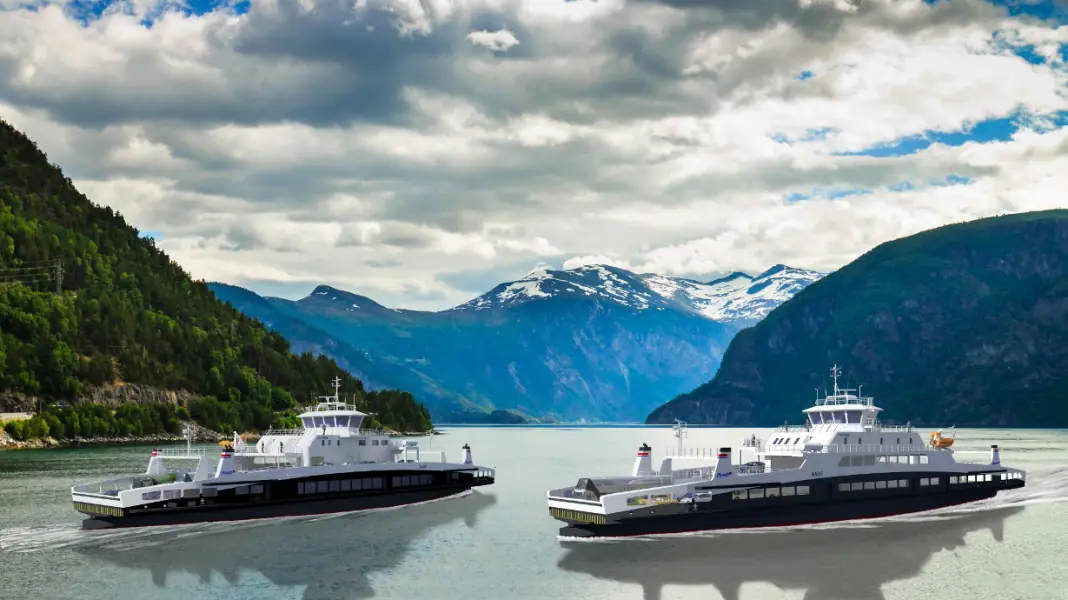HAV Design has signed a contract for two new battery-powered ferries, which means that the ferries at the gateway to the Geirangerfjord will also be quiet, clean, and green.
HAV Design is a leading company in the design of low and zero-emission vessels, and these are the thirteenth and fourteenth ferry designs with zero-emission technology. The two HAV 934 ferries will operate on the Stranda-Liabygda and Eidsdal-Linge routes. They will have a capacity of 80 cars and 249 passengers and will be built at the Turkish shipyard Tersan for Fjord1.
Green transition on the fjords
Lars Conradi Andersen, Vice President Sales at HAV Design, says that the many battery-powered ferries from HAV Design have contributed to a green transition in Norwegian ferry traffic and made many fjord ferry services more environmentally friendly.
‘It is particularly pleasing that our designs will now contribute to the ferry revolution in a World Heritage area whose nature requires extra protection. We know that these routes are popular with tourists during the summer season, and now visitors to the World Heritage area can cross the fjord and enjoy the scenery, undisturbed by noise and exhaust fumes.’

In Photo: Lars Conradi Andersen, Vice President Sales at HAV Design AS. Photo: Siv-Elin Nærø
Over the course of three years, HAV Design has delivered ship designs for zero-emission vessels that lead to annual savings of around 60,000 tons of CO2 compared to traditional diesel-powered ferries.
‘This is a considerable saving for the environment, and the staff at HAV Design is proud to be building a sustainable future on the sea together with our customer Fjord1.’
Energy-efficient
In the work on the design, HAV Design runs route simulation and hull optimization at HAV Ocean Lab. Large quantities of data on both the ferry design and the individual route are used to create a virtual model of the area and a digital twin of the ferries.
HAV Design looks at the total design in a sustainability perspective to reduce all input factors. The battery is an important factor and low energy consumption is also a major focus, which is more important than ever although the ferries use renewable energy.
‘We thus design tailored and energy-efficient designs that are competitive and increase value creation for the owners while also providing a solution that benefits the environment and climate.’












